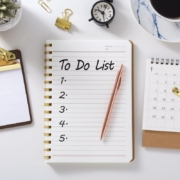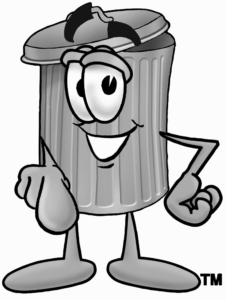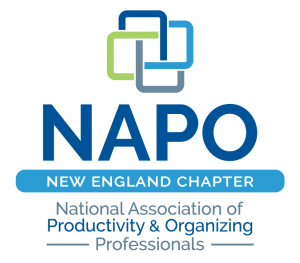You may already know that I’m an avid scrapbooker. I love creating decorative pages with photos and paper embellishments to highlight my family stories and milestones. I also love sharing my creations with family. They joke around and say I’m a scrapbook pusher, but I know they like looking at them. Thanksgiving or any family get together is a great time to share my scrapbooks. I always bring one to push into their hands and invite them to look and reminisce.
Before that finished scrapbook is ready to share, the creating process happens. Things get messy when I’m creating, and I think that’s typical of most people. When you’re in the creative groove, organization is not a priority. However, I think an organized craft area helps us be more productive. Don’t we all want to quickly and easily put our hands on the tools we need for our project? Wasting time searching for our supplies is frustrating.
So, how do we set up an organized craft area? Whether you have a whole room devoted to your crafts, or you have to pull them out each time you use them, you can create an efficient crafting space with the Reach Ability Factor. It is a system that helps you decide the best location for things based on how frequently you use them.
There are 4 sections in the Reach Ability Factor. Use them to set up your crafting workspace.
 Section A: Items in this section are tools and supplies that are used all the time. It depends on the craft, but some examples are scissors, pencils, cutting tools, and adhesives. Place items in section A within easy reach, so little effort is needed to reach out an grab them.
Section A: Items in this section are tools and supplies that are used all the time. It depends on the craft, but some examples are scissors, pencils, cutting tools, and adhesives. Place items in section A within easy reach, so little effort is needed to reach out an grab them.
Section B: Items in this section are tools and supplies that are used frequently, but not on every craft project. Some examples may be, templates, patterns, and instructions. Place items in section B within comfortable reach, which requires us to get up and move a little.
Section C: Items in this section are tools and supplies that are used occasionally. Some examples may be special fabric, paper, and markers. Place items in section C within uncomfortable reach, which requires us to exert more effort to reach.
Section D: Items in this section are tools and supplies that are used once in a while or on special projects only. Some examples may be unique supplies that require more time to use, and items that are for a very special project. Place items in section D within difficult reach, which requires us to move other things to get at them.
Whether you have a designated craft space or you set up shop wherever you can, the Reach Ability Factor can help establish crafting order. By using it as a guide to set up your crafting workspace, you place yourself in the center circle and your tools according to use in the concentric circles around you. This enables you to create without having to waste time searching for tools and supplies. Enjoy the creative process.
The Reach Ability Factor can be used in other areas as well, for example a home office, the kitchen prep and cooking areas, and a homework area.
© November 2020 Janine Cavanaugh, Certified Professional Organizer® All Rights Reserved
 Save busy work until the end of the day. It can be tempting to get the busy work out of the way, but you’ll be more productive if you address top priority items first, while fresh and full of energy. Devote time and energy to completing the most important and urgent items then take care of busy work.
Save busy work until the end of the day. It can be tempting to get the busy work out of the way, but you’ll be more productive if you address top priority items first, while fresh and full of energy. Devote time and energy to completing the most important and urgent items then take care of busy work.







 Section A: Items in this section are tools and supplies that are used all the time. It depends on the craft, but some examples are scissors, pencils, cutting tools, and adhesives. Place items in section A within easy reach, so little effort is needed to reach out an grab them.
Section A: Items in this section are tools and supplies that are used all the time. It depends on the craft, but some examples are scissors, pencils, cutting tools, and adhesives. Place items in section A within easy reach, so little effort is needed to reach out an grab them.

Follow Me